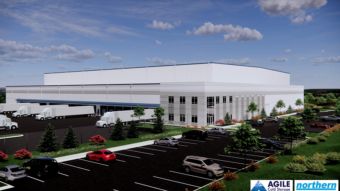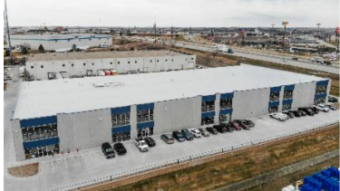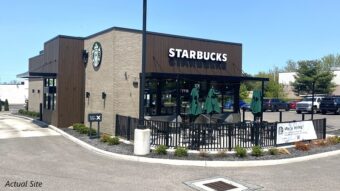Column by Dan Earles, Principal, Earles Architects and Associates
Today’s office spaces are increasingly being shaped by company culture, as businesses look to incorporate their corporate branding and values. This is a significant shift in mindset and part of the overall evolution of office space seen over the past 25 years since EAA first started working with landlords and tenants in Chicago.
The overly-structured, boxy corporate offices of the 1990s have evolved to become highly customized spaces that reflect each company’s goals for team interaction and company image.
This means plenty of open space, flexible workspace arrangements, and comfortable furniture groupings that help convey a company’s image and values. In essence, the workplace has become an extension of a company’s corporate branding and is playing out in several ways:
- Logo colors and themes that flow through the office in carpeting, paint, artwork
- Unique reception and conference areas that showcase company branding, achievements and innovation
- Wayfinding that uses corporate colors and names to help move people through the office space
The office market also has seen a tremendous geographic expansion in the past 25 years, with River North and, more recently, the Fulton Market coming into the mainstream as desirable office locations. Each different market sector provides businesses with plenty of opportunity to find an ideal space and add the level of customization needed to build employee loyalty, spur on productivity, and impress existing as well as prospective clients.
All these changes are also impacting the landlord market, as they look to maintain their buildings to the highest levels and add amenities that will attract and retain tenants. Many downtown buildings, from River North to Fulton Market to the CBD, are undergoing extensive redesigns or upgrades to the common areas and amenity packages. Some landlords are also rethinking how their buildings should flow to fit today’s collaborative office culture. They are being proactive about designing new space and speculative suites to increase leasing activity. All these efforts also contribute to the brand identity of the building, or building ownership.
While each office tenant is unique, there are other common themes driving tenants today in the various business sectors:
- The need for efficiency in space planning. Many tenants have moved toward smaller work stations and/or offices to improve efficiencies. The large executive offices that were common in the 1980s and 90s are rarely included in office floor plans.
- A desire for full service capabilities from business partners. This extends to space design and build out, as businesses are moving at a fast busy and often look for service providers that can deliver a comprehensive result. EAA, for example, added SEAATS, a commercial furniture division to fill that need for streamlined design and furniture selection services.
- A focus on technology, ranging from conferencing solutions, monitors and screens, to wifi hotspots and “hot desk” options that allow for flexible use of space. Technology provides tremendous flexibility, allowing employees to connect remotely and easily move around the office to join in collaborative, team efforts.
These themes are taking place on all business sectors, from established technology tenants to start-up firms, and from law firms to financial and professional services firms. The past 25 years have seen many exciting changes in the downtown office market, ones that should continue to shape the business community for years to come.
Chicago-based Earles Architects and Associates (EAA) is celebrating its 25th anniversary. The firm provides architectural and interior design services, along with commercial furniture services, for a wide range of businesses including commercial offices, retail spaces and restaurants throughout Chicagoland and Northwest Indiana.




